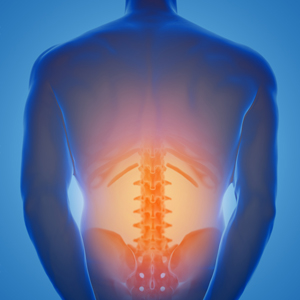
 Studies have shown that low back pain is one of the most common reasons for visits to a PCP. And, based on the severity of their pain, patients may perceive the need for advanced imaging scans as a first step in their diagnosis.
Studies have shown that low back pain is one of the most common reasons for visits to a PCP. And, based on the severity of their pain, patients may perceive the need for advanced imaging scans as a first step in their diagnosis.
However, nationally accepted best practice guidelines (see Evidence-Based Guidelines, below) offer treatment alternatives that may help patients manage pain appropriately and avoid the high out-of-pocket costs of unnecessary advanced imaging scans.
Please share the following guidelines with the physicians in your practice or facility and ask them to discuss the guidelines with patients to help them better understand the costs and potential health risks associated with unnecessary advanced imaging procedures.
The American College of Physicians' Current Clinical Practice Guideline for the Diagnosis and Treatment of Low Back Pain offers viable treatment alternatives.1 And the Academy of Family Physicians has endorsed this guideline for best practice, which recommends managing initial acute, chronic, or sub-acute low back pain in these ways:
According to the Institute for Clinical and Economic Review (ICER), several perceived barriers may prevent clinicians from following the recommendations listed above in the practice guidelines, including the following2:
The National Committee for Quality Assurance (NCQA) recommends that imaging for low back pain should be avoided for at least 28 days in the outpatient setting, unless there are clear indications requiring more aggressive interventions.
Highmark supports this best practice and promotes the use of evidence-based care to ensure that our members receive high-quality, appropriate, and safe treatment at an affordable cost. Highmark also maintains a Radiology Management Program  to ensure appropriate use of outpatient, non-emergency diagnostic imaging procedures for our members.
to ensure appropriate use of outpatient, non-emergency diagnostic imaging procedures for our members.
Physicians also can consult Highmark's Clinical Practice Guideline for opioid use that's available on our online Provider Resource Center. On the Resource Center, click on Education/Manuals and then on Clinical Practice and Preventive Health Guidelines. In the 2018 Clinical Practice Guidelines section, click on Prescribing Opioids for Chronic Pain Guideline and Key Points.
Note: The coverage of any medical service or treatment is subject to the terms of the member’s benefit plan. Additionally, the physician and patient will determine the appropriate course of treatment for the patient.

aafp.org/patient-care/clinical-recommendations/all/cw-back-pain.html  (accessed Jan. 10, 2018)
(accessed Jan. 10, 2018)
ncbi.nlm.nih.gov/pmc/articles/PMC5264674/  (accessed Jan. 10, 2018)
(accessed Jan. 10, 2018)